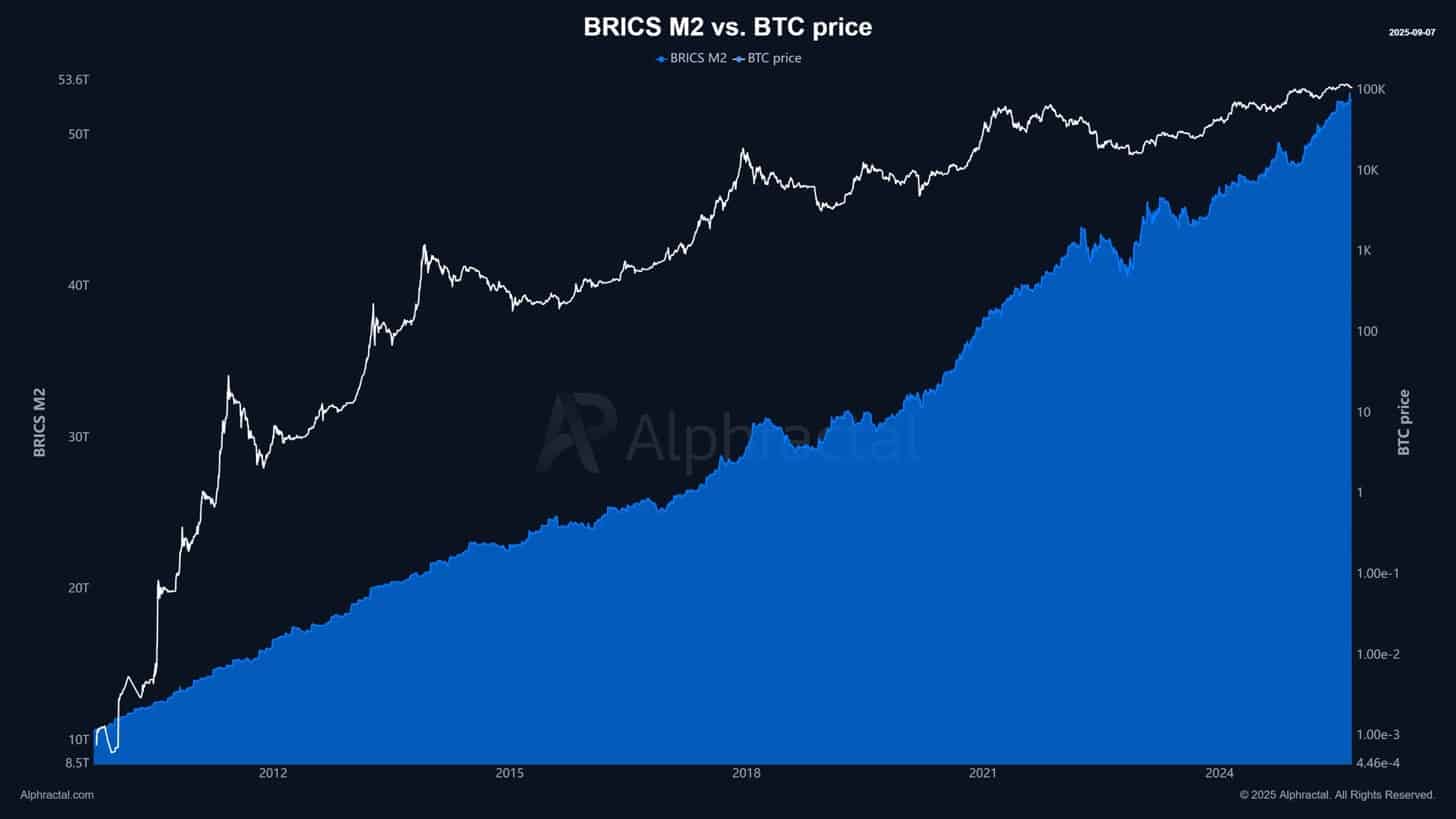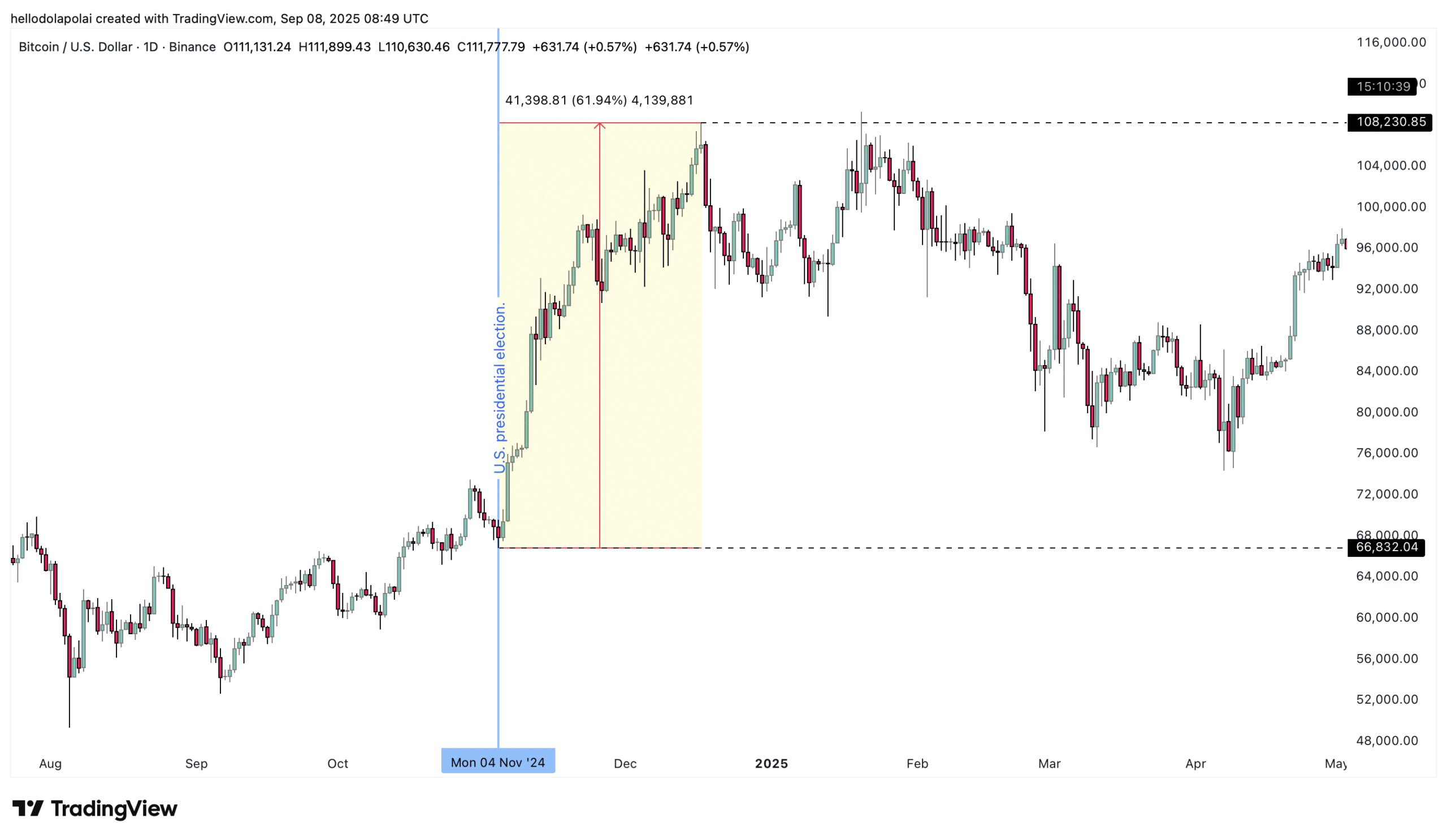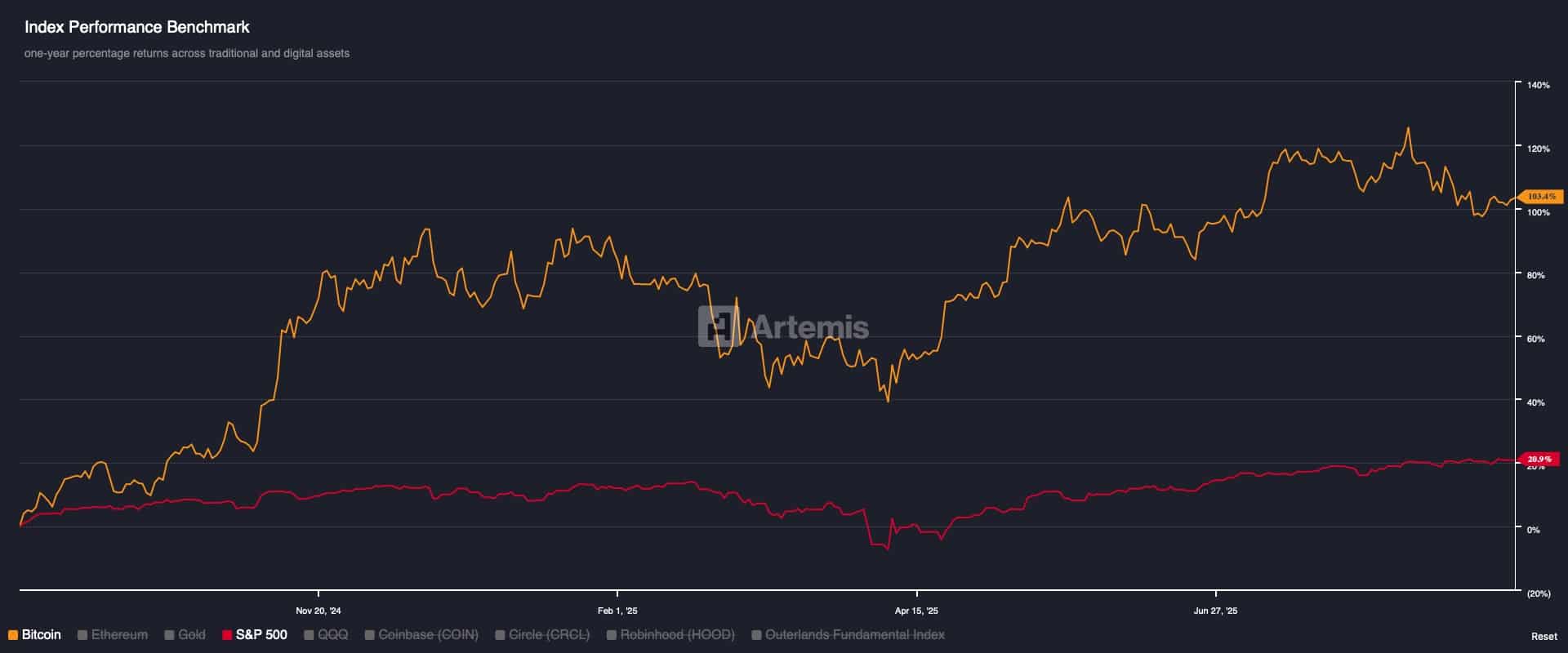Rising BRICS liquidity could support Bitcoin by increasing capital flows into digital assets and reducing dependency on the U.S. dollar. If BRICS nations expand monetary bases and allocate reserves to Bitcoin, demand and price pressure on BTC are likely to strengthen in the medium term.
-
BRICS liquidity is expanding
-
Brazil’s RESBit proposal and China’s stablecoin exploration may funnel liquidity toward Bitcoin.
-
Bitcoin’s market cap and exchange reserve trends indicate growing long-term holding: 2.4M BTC on exchanges (CryptoQuant).
BRICS liquidity could support Bitcoin price and adoption — read how rising reserves and RESBit proposals may boost BTC demand today.
How could BRICS liquidity support Bitcoin?
BRICS liquidity expansion can support Bitcoin by increasing local and cross-border capital available for digital-asset investment. Rising monetary bases and trade-driven liquidity in BRICS nations may shift a portion of reserves and private savings into Bitcoin, boosting demand and potentially lifting price dynamics within months.
What evidence shows liquidity is rising across BRICS?
Recent analyses by Alphractal tracking monetary base and bank liquidity show broad growth across Brazil, Russia, India, China, and South Africa. Increased international trade and domestic monetary expansion have been cited as drivers of this liquidity rise, signaling a shifting global financial axis away from sole reliance on the U.S. dollar.

Source: Alphractal
A direct comparison between BRICS monetary aggregates and Bitcoin price history shows correlation during liquidity expansions. Periods of rising base money in these economies have historically aligned with stronger Bitcoin flows and price appreciation.
Why could Brazil and China materially change Bitcoin demand?
Brazil’s RESBit proposal would allocate roughly 5% of a specific budget tranche — estimated at about $19 billion — to a national Bitcoin reserve. Such a government-level allocation would add substantial institutional demand to BTC markets and may encourage private-sector and pension uptake across Latin America.
China’s exploration of a yuan-backed stablecoin is a separate channel that can increase onshore digital liquidity. Although China enforced a broad crypto ban in 2021, any official stablecoin initiative aimed at internationalization of the yuan would likely increase crypto-related infrastructure and institutional interest in digital assets in the region.

Source: TradingView
When has macro liquidity previously influenced Bitcoin?
Macro events with rapid liquidity shifts have historically impacted Bitcoin. For example, after the November 2024 U.S. election, Bitcoin rallied sharply: TradingView data shows BTC gained over 66% from Nov 5 to December 2024, approaching a $108,000 high as liquidity and risk-on flows accelerated.
How is Bitcoin performing versus traditional markets now?
Year-to-date performance comparisons show Bitcoin outpacing many benchmarks. According to Artemis index data, BTC’s YTD gains reached 103% versus 32% for the S&P 500. High trading volumes reported on major global exchanges — cited in market commentary at roughly $700 trillion cumulative volumes — help illustrate investor demand and market depth.

Source: Bitcoin vs. S&P500
What market indicators should investors watch?
- Exchange reserves: CryptoQuant reports 2.4M BTC on exchanges; continued declines suggest longer-term holding and reduced sell-side pressure.
- BRICS monetary aggregates: M2 and bank liquidity trends from Alphractal show directional flows.
- Policy signals: Official statements on RESBit, yuan stablecoin initiatives, and reserve allocations are key catalysts.
Frequently Asked Questions
Could BRICS reserve allocations directly raise Bitcoin’s price?
Yes. Large government reserve allocations or formal purchase programs (for example, a national reserve allocation) would create significant, sustained demand for BTC and could materially support higher prices and reduced volatility over time.
Is the BRICS liquidity trend confirmed across all member countries?
Data indicates liquidity expansion in several BRICS economies, but pace and scale vary by country. Official reports and monetary statistics from national central banks and Alphractal provide the most current measurements.
How should investors assess risk if BRICS liquidity flows into Bitcoin?
Investors should monitor on-chain metrics, exchange reserves, and official BRICS policy statements. Diversification and position sizing remain critical given macro and regulatory uncertainties.
Key Takeaways
- Rising liquidity in BRICS: Could provide fresh capital flows into Bitcoin markets.
- Policy catalysts matter: Brazil’s RESBit and China stablecoin plans are potential demand accelerants.
- On-chain signals: Falling exchange reserves (2.4M BTC) point to stronger long-term holding behavior.
Conclusion
BRICS liquidity expansion is emerging as a credible support factor for Bitcoin. With evidence of rising monetary bases and active policymaking in Brazil and China, BTC may see sustained demand if reserves and institutional flows increase. Monitor official BRICS data, on-chain metrics, and exchange reserves for timely signals. — COINOTAG (published: 2025-09-08, updated: 2025-09-08)
